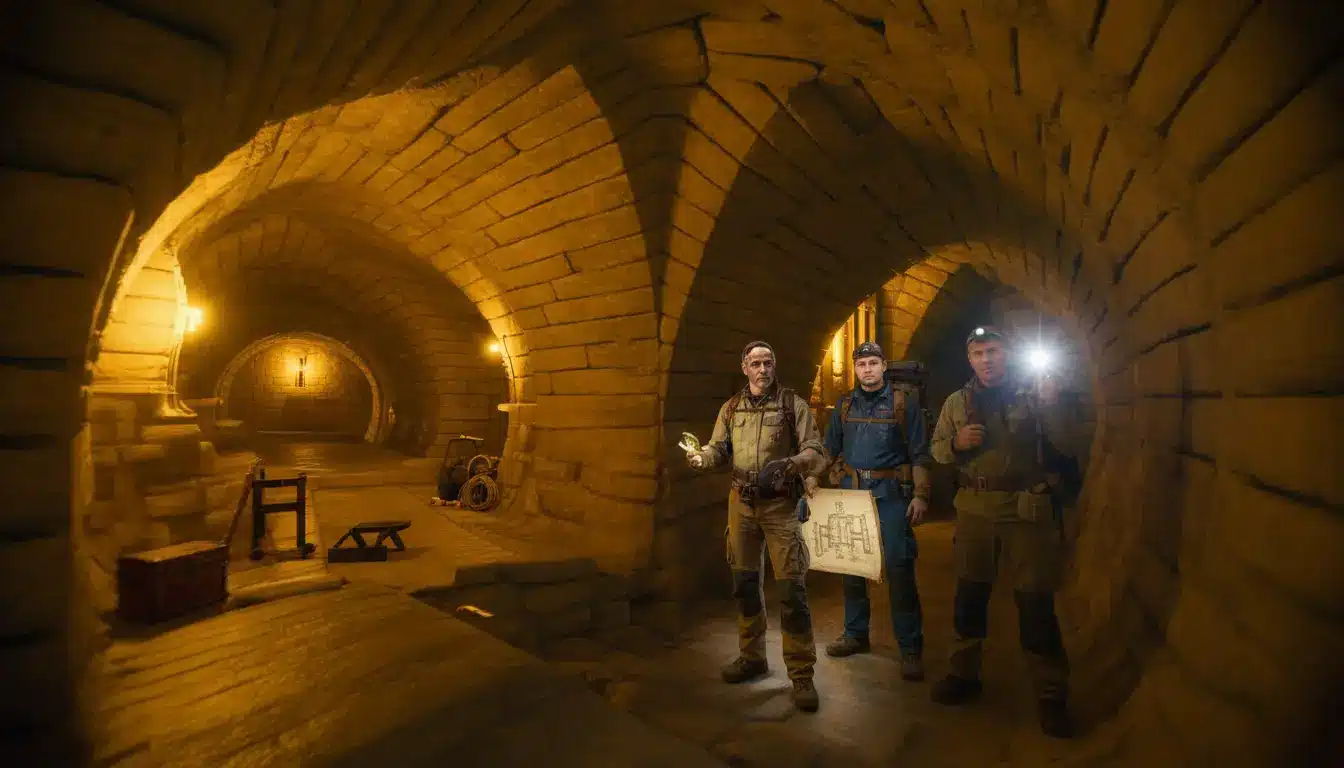Just when we thought Leonardo da Vinci had no more surprises up his (rather billowy) Renaissance sleeves, a hidden chapter of Milan’s history has burst into the light—literally from beneath our feet. Thanks to a blend of lost drawings and ultra-modern tech, the secrets lurking under Sforza Castle are finally coming to the surface—and they’re as thrilling as a historical detective novel.
From Artistic Genius to Architectural Sleuth
Leonardo da Vinci’s genius has enchanted the world for centuries, but it appears he was also in the business of treasure maps. While everyone gawked at his paintings, a persistent handful of researchers kept coming back to his enigmatic sketches in the Codex Forster I, where Leonardo, during his stint embellishing Sforza Castle in 1494, hinted at the existence of a vast underground network. For generations, these rumored tunnels stoked curiosity and debates, but their actual presence always remained a tantalizing mystery—until now.
Recently, a team of researchers did something that would make any Renaissance man proud: they teamed up with ground-penetrating radar and laser scanning technology. With this high-tech toolkit, they mapped out the very heart of Sforza Castle’s underbelly and revealed the passages Leonardo depicted all those years ago. Modern innovation breathed life into ancient speculation, and suddenly, what had once seemed like myth became measurable and real.
The Secret Life of Sforza Castle
Let’s travel back to the fifteenth century, when Francesco Sforza, Duke of Milan, decided his castle needed a serious glow-up. Towers, courtyards, fresco-adorned halls—the works. Fast-forward to his son, Ludovico Sforza, who called in Leonardo for a creative touch that would be the envy of every Renaissance influencer. But Leonardo didn’t just leave his artistic mark. He also recorded detailed sketches of underground tunnels that linked the mighty fortress to key locations in Milan.
What was the secret sauce behind these passageways? Primarily, they were built with military intent—think surprise maneuvers and quick escapes rather than banquets and ballroom dancing. However, history always throws in a twist. A select passage connected the castle directly to the Basilica of Santa Maria delle Grazie, home to Leonardo’s legendary The Last Supper. This wasn’t just about strategy; it offered fast, discreet access to the Sforza family tombs, blending secular power with spiritual roots. These tunnels, then, don’t just speak of war—they whisper of family ties, traditions, and a touch of Renaissance sentimentality.
Technology Shines Light on Lost Spaces
What’s truly dazzling is how the latest advances in survey technologies have literally unveiled these inaccessible realms. As Francesca Biolo from the Polytechnic University of Milan notes, ground-penetrating radar and laser scanning have transformed our capacity to chart and explore the previously invisible. These cutting-edge methods don’t just reveal what still stands—they also allow historians to reconstruct what’s vanished, feeding digital models and opening unprecedented avenues for historical and archaeological research.
- Unknown passages mapped and confirmed
- Integration of new data into digital reconstructions
- Potential for future studies on additional secret spaces
As Franco Guzzetti, geomatics professor at the same university, explains, the goal isn’t just to have a pretty 3D castle; this « digital twin » will trace Sforza Castle’s transformations across centuries, enriched by layers of historical detail. Imagine walking through the fortress, both past and present, at your fingertips. Or—perhaps even more exciting—at your eye-level, thanks to planned augmented reality features. Visitors might soon step into rooms, courtyards, or tunnels otherwise closed to the public, completely immersed in layers of Milanese history.
A New Era for Milan’s Cultural Tourism
These revelations don’t just set historians’ hearts aflutter; they could seriously shake up Milan’s cultural tourism. Today, Sforza Castle already attracts visitors as the home of three prominent museums—the Castello Sforzesco Pinacotheca, the Pietà Rondanini Museum, and the Museum of Ancient Art. But with the now-confirmed tunnels and prospects for virtual or augmented exploration, the castle’s draw is destined to grow.
- Virtual access to hidden underground spaces
- Augmented reality experiences transforming museum visits
- An enriched view of Milan’s lesser-known heritage
Cultural travelers will soon have the chance to discover a side of the city’s legacy previously known only to experts and the eternally curious. The invisible becomes visible, and new perspectives on heritage sites emerge. Thanks to a fusion of da Vinci’s sketches and today’s technology, our relationship with history is more vivid—and interactive—than ever.
While researchers continue to build this digital twin and decode the secrets of Sforza Castle, one question floats above the excitement: How will these emerging technologies change our understanding of cultural heritage in the coming years? And with Milan’s tunnels just discovered, who knows what else is hiding—waiting for a Renaissance genius (or a modern radar) to stumble upon it?

John is a curious mind who loves to write about diverse topics. Passionate about sharing his thoughts and perspectives, he enjoys sparking conversations and encouraging discovery. For him, every subject is an invitation to discuss and learn.






